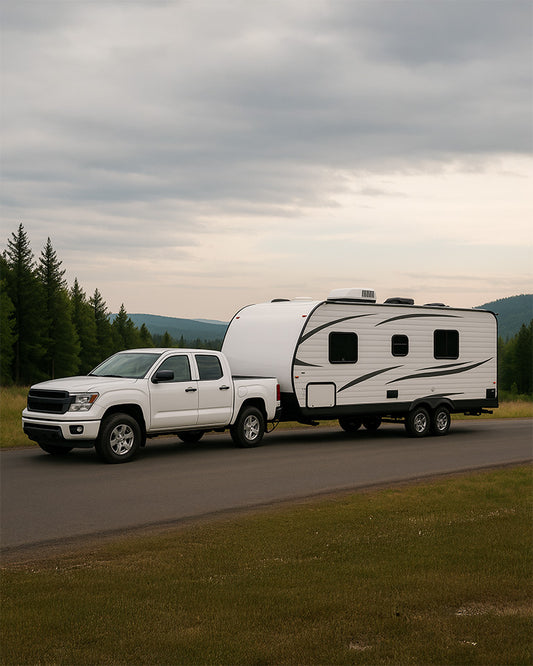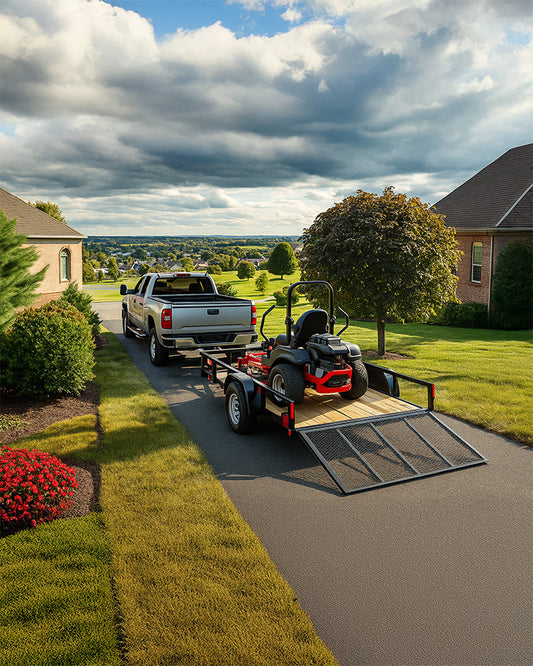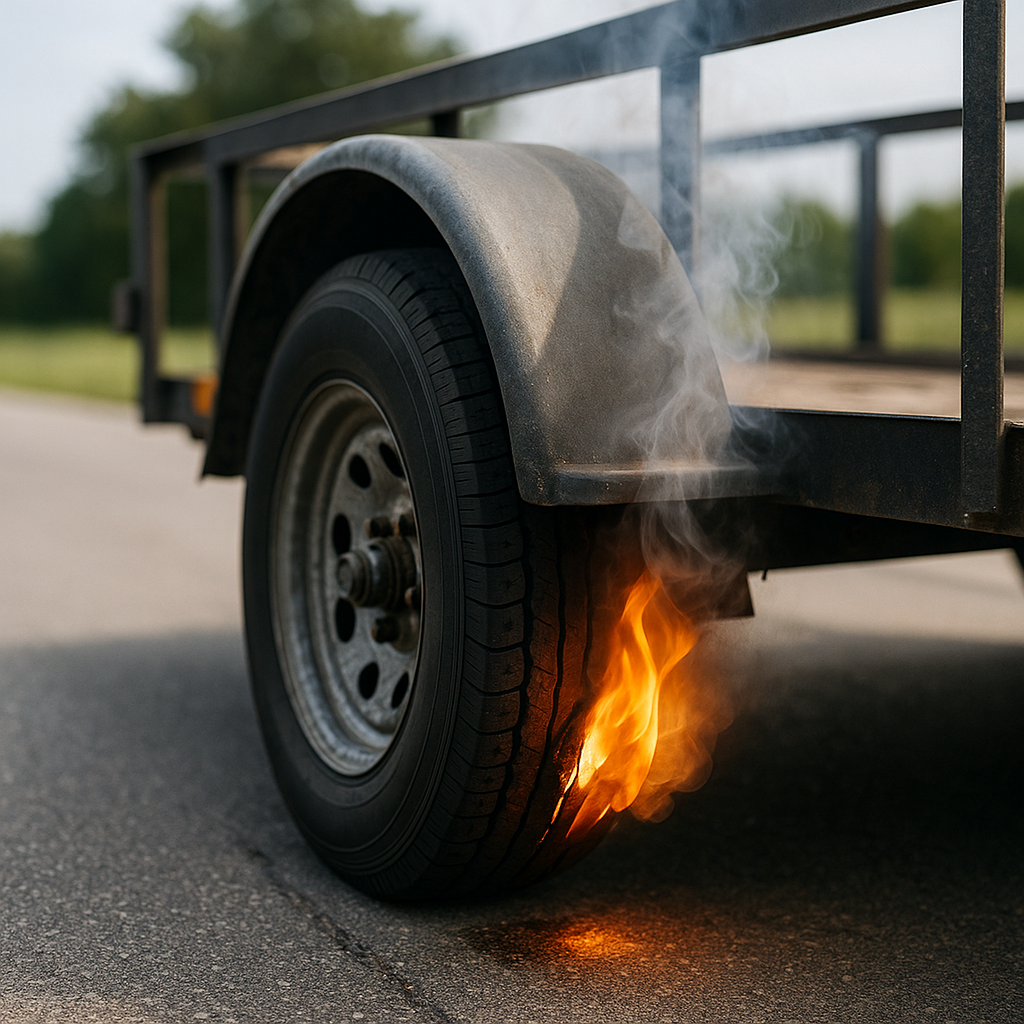In today's fast-paced world, ensuring the safety of trailers and their loads is more crucial than ever. A safety monitoring system serves as a vital tool for enhancing operational safety by continuously tracking and analyzing critical conditions of trailers in real-time. But what exactly is a safety monitoring system? At its core, it is an integrated system designed to monitor various parameters that could affect the safe operation of a trailer.
These systems typically include:
- Axle Temperature Sensors: These devices monitor the temperature of trailer axles, alerting operators to any abnormal heat levels that could indicate potential failures.
- Tire Pressure Monitoring: Keeping an eye on tire pressure is essential for safe towing. A drop in tire pressure can lead to blowouts, making this feature crucial.
- GPS Tracking: Many safety monitoring systems also incorporate GPS technology to track trailer locations, providing an added layer of security and peace of mind.
By gathering and analyzing data from these components, a safety monitoring system allows operators to intervene before issues escalate into catastrophic failures. This not only protects the trailer and its cargo but also enhances the overall safety of roadways. Tow with peace of mind, knowing that trailerwatchdog is standing guard.
Key Components of an Effective Safety Monitoring System

For a safety monitoring system to function effectively, it must be equipped with essential components that work in harmony. Understanding these key components can help trailer operators appreciate the full capabilities of such systems. Here are the main elements that contribute to a well-rounded safety monitoring solution:
- Temperature Sensors: These sensors play a crucial role in monitoring axle temperatures. Excessive heat can indicate mechanical problems, and timely alerts can help prevent potential failures.
- Tire Pressure Sensors: Maintaining optimal tire pressure is vital for safe towing. Tire pressure sensors provide real-time updates, allowing operators to address any issues before they become hazardous.
- Data Transmission Unit: This component transmits collected data to a central monitoring system or a mobile application, ensuring that operators receive instant alerts about any irregularities.
- Power Management System: A reliable power source is essential for the continuous operation of all monitoring components. Systems often use battery backups or solar panels to ensure uninterrupted monitoring.
- User Interface: A user-friendly interface allows operators to easily access and interpret data, enabling quick decision-making based on real-time information.
By integrating these components, safety monitoring systems create a comprehensive safety net for trailers, ultimately leading to enhanced operational efficiency and reduced risk of accidents.
Benefits of Implementing a Safety Monitoring System

Implementing a safety monitoring system offers a multitude of advantages that can significantly enhance the safety and efficiency of trailer operations. By investing in such technology, operators can experience the following benefits:
- Accident Prevention: With real-time monitoring of axle temperatures and tire pressures, potential issues can be identified and addressed before they lead to catastrophic failures, thereby reducing the likelihood of accidents.
- Increased Downtime Awareness: By receiving alerts about abnormal conditions, operators can take proactive measures to conduct maintenance or inspections, minimizing downtime and keeping operations running smoothly.
- Cost Savings: Preventing accidents and minimizing breakdowns can lead to substantial cost savings over time. Reduced repair costs, lower insurance premiums, and less operational disruption all contribute to a healthier bottom line.
- Enhanced Compliance: Many industries have strict safety regulations. Implementing a safety monitoring system helps ensure compliance with these regulations, reducing the risk of fines and enhancing company reputation.
- Data-Driven Decisions: A safety monitoring system collects valuable data that can be analyzed for insights. This data helps operators make informed decisions regarding maintenance schedules and operational practices.
Overall, the benefits of implementing a safety monitoring system are comprehensive, making it a worthwhile investment for any trailer operator looking to prioritize safety and efficiency.
How Safety Monitoring Systems Work in Real Time

Safety monitoring systems operate through a sophisticated network of sensors and data analytics, enabling real-time tracking of a trailer’s critical parameters. Understanding how these systems work can shed light on their importance in enhancing safety on the road.
At the core of a safety monitoring system are sensors that are strategically placed on the trailer to monitor key metrics, such as:
- Axle Temperature: Sensors measure the temperature of the axles, which can indicate potential overheating due to friction or load issues.
- Tire Pressure: Monitoring tire pressure is crucial, as under-inflated or over-inflated tires can lead to blowouts and loss of control.
- Brake Performance: Sensors can track the effectiveness of the braking system, alerting users to any irregularities that could compromise safety.
These sensors continuously send data to a central monitoring unit, which processes the information in real-time. When the system detects an anomaly—such as a sudden spike in axle temperature or a drop in tire pressure—it triggers an immediate alert, allowing operators to take corrective action before a minor issue escalates into a major problem.
Furthermore, many modern safety monitoring systems can connect to mobile devices or dashboards, allowing operators to view critical data and alerts from anywhere, enhancing their ability to respond swiftly to any safety concerns.
By leveraging technology and real-time data, safety monitoring systems empower trailer operators to maintain high safety standards and ensure peace of mind during their journeys.
Common Applications of Safety Monitoring Systems
Safety monitoring systems have become indispensable tools across various sectors, enhancing operational efficiency and safety. Their versatility allows them to be applied in several scenarios, each contributing to a safer and more reliable transportation experience. Here are some common applications:
- Fleet Management: Companies managing fleets of trailers utilize safety monitoring systems to track vehicle health and performance. Real-time data on tire pressure and axle temperatures helps fleet managers prevent breakdowns and optimize maintenance schedules.
- Logistics and Transportation: In logistics, timely delivery is crucial. Safety monitoring systems alert drivers to potential hazards, ensuring that goods arrive safely and on time while minimizing the risk of accidents.
- Recreational Trailers: For individuals using trailers for recreational purposes, such as camping, monitoring systems provide peace of mind. They help ensure that trailers are in optimal condition, reducing the chances of mishaps during long journeys.
- Construction and Heavy Equipment: In construction, trailers often carry heavy loads. Safety monitoring systems can alert operators to overloading or equipment failure, preventing accidents that could lead to serious injuries.
- Emergency Services: Emergency response teams rely on safety monitoring systems to ensure that their vehicles are always ready for action. Monitoring the status of trailers helps maintain operational readiness in critical situations.
By integrating safety monitoring systems into these diverse applications, companies and individuals alike can enhance safety protocols and reduce the risk of catastrophic failures, ultimately leading to greater efficiency and reliability in their operations.
Future Trends in Safety Monitoring System Technology

The landscape of safety monitoring system technology is evolving rapidly, with innovations aimed at improving user experience and enhancing safety measures. As industries increasingly recognize the importance of proactive monitoring, several future trends are emerging:
- Integration with IoT: The Internet of Things (IoT) is set to revolutionize safety monitoring systems. By connecting trailers to a network of smart devices, real-time data can be shared seamlessly, allowing for more informed decision-making and quicker responses to potential issues.
- Artificial Intelligence (AI) and Machine Learning: AI is expected to play a significant role in predictive analytics. By analyzing historical data, these systems can anticipate failures before they occur, allowing operators to address issues proactively, thus preventing accidents.
- Enhanced User Interfaces: Future systems will likely feature more intuitive user interfaces, making it easier for operators to access critical information quickly. Mobile applications and dashboard enhancements will provide instant alerts and insights into trailer performance.
- Increased Focus on Sustainability: As environmental concerns grow, safety monitoring systems will increasingly support green technologies. This includes optimizing fuel consumption and reducing emissions by ensuring trailers are always operating at peak efficiency.
- Regulatory Compliance: With governments around the world tightening regulations on transportation safety, future safety monitoring systems will be designed to ensure compliance effortlessly, reducing the administrative burden on operators.
As these trends unfold, the importance of advanced safety monitoring systems will continue to grow. Tow with peace of mind, knowing that trailerwatchdog is standing guard. Embrace the future of safe and efficient trailer operation today!








